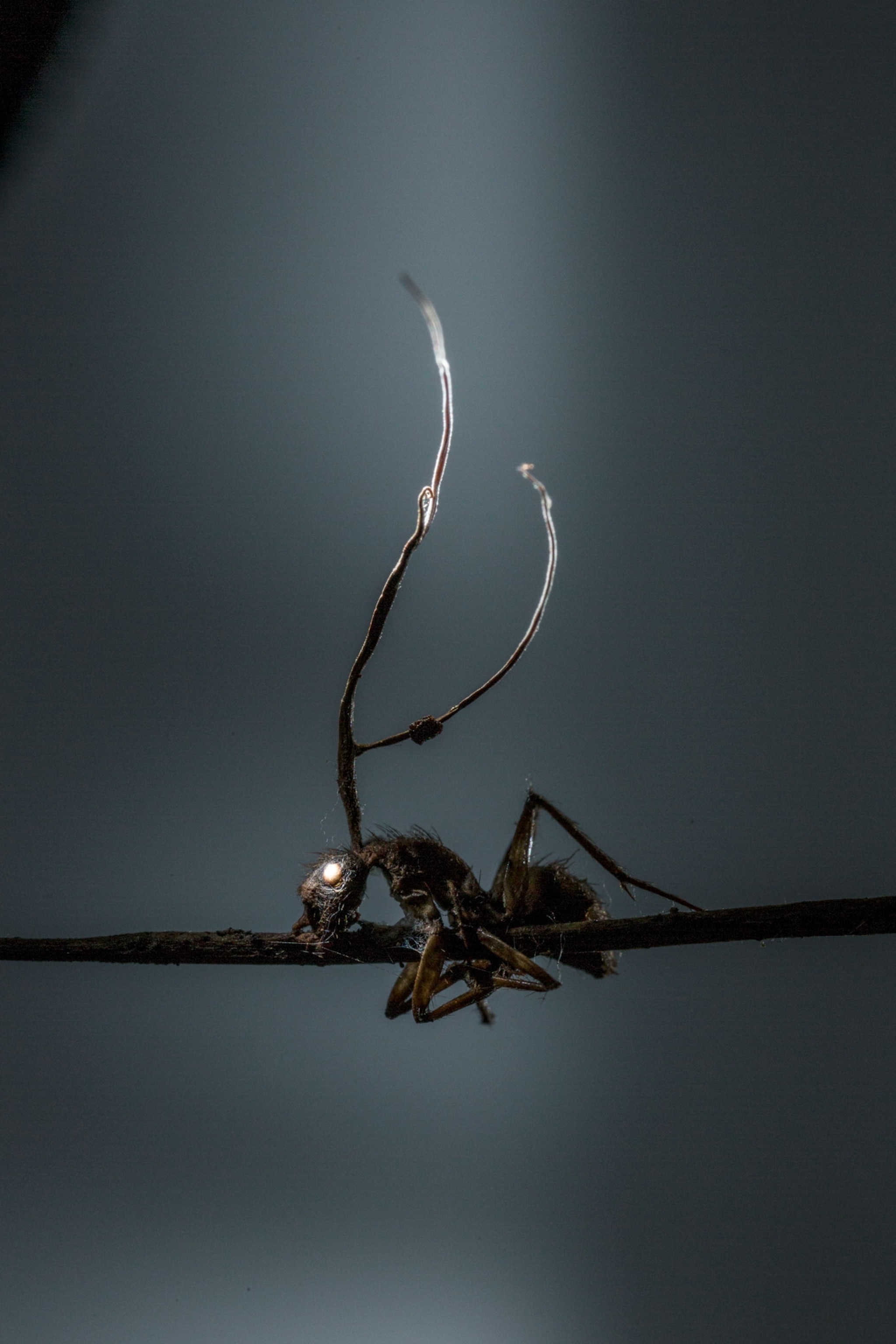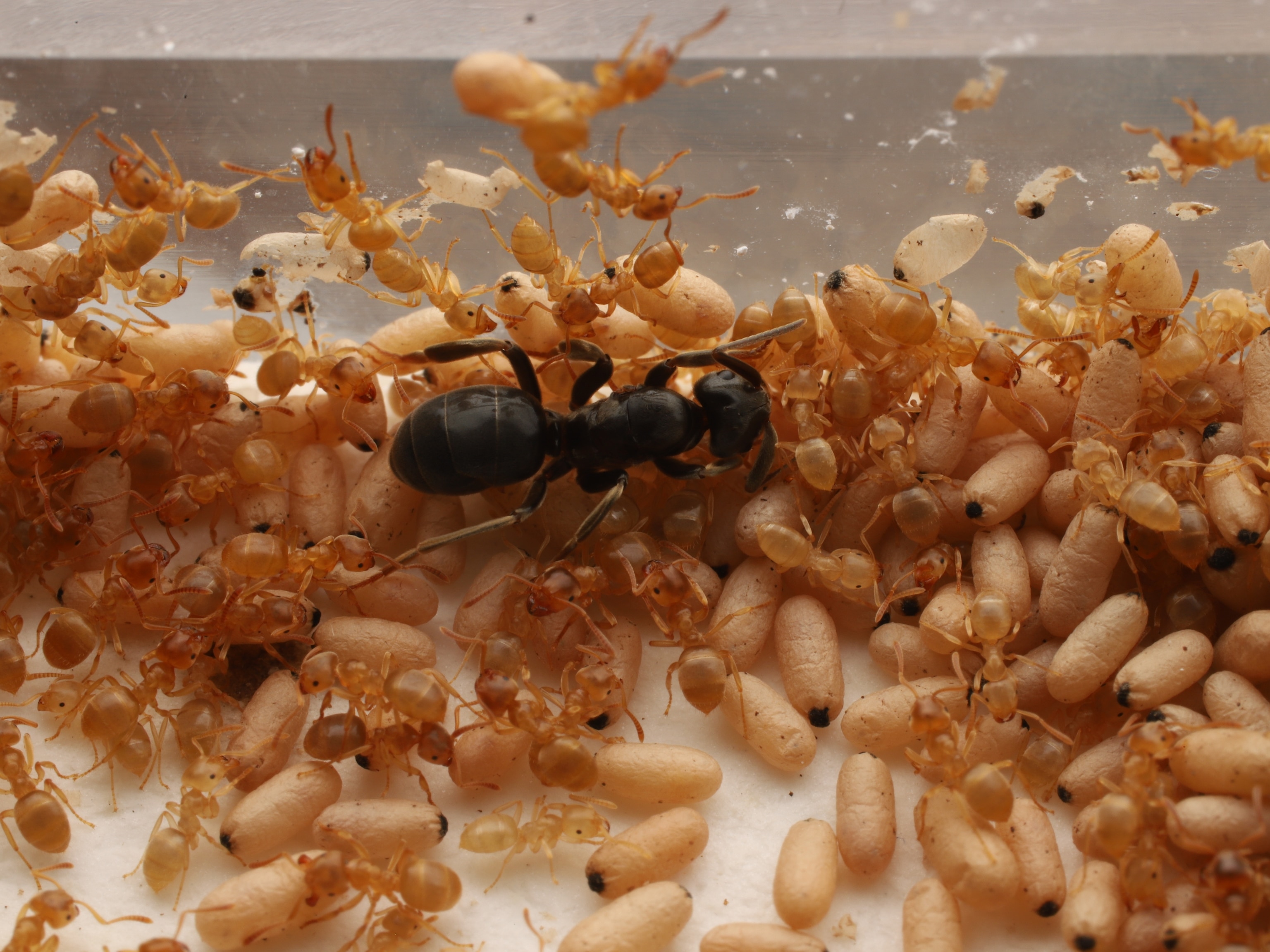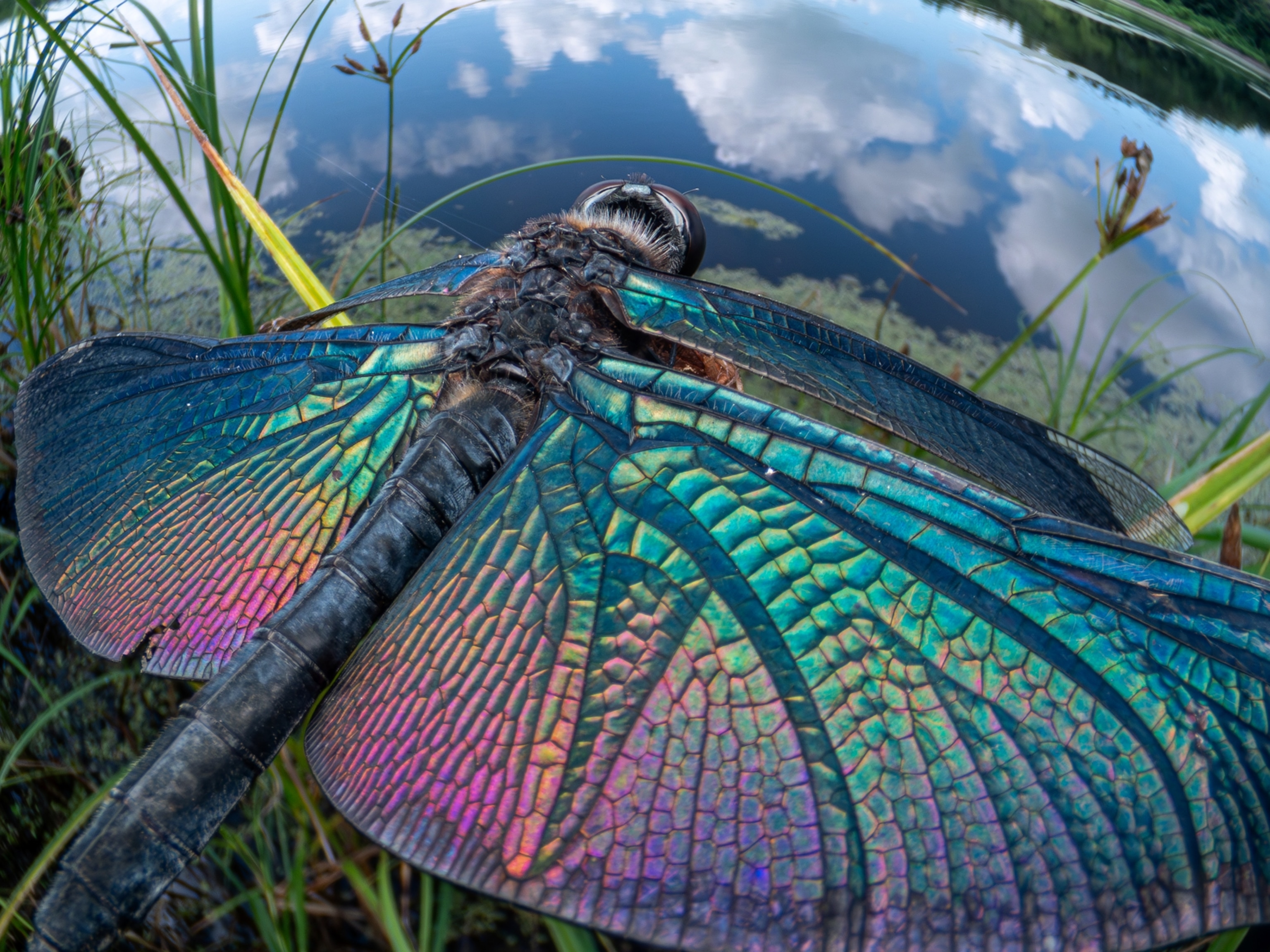How a cordyceps fungus turns ants into ‘zombies’
The deadly Ophiocordyceps unilateralis spreads by sending toxic spores blooming from the dead ant’s head.

The Ophiocordyceps unilateralis fungus has just one goal: self-propagation and dispersal. To do so, the parasitic fungus hijacks ants’ bodies, essentially turning them into zombies.
Researchers think the fungus, found in tropical forests, begins its life cycle by infecting a foraging ant through fungal spores that attach and penetrate the exoskeleton.
As the infection advances, the fungus compels the ant to leave its nest for a more humid microclimate that’s favorable to the fungus’s growth. The ant descends to a vantage point about 10 inches off the ground, where it sinks its jaws into a leaf vein on the north side of a plant, assuming a death grip.
Meanwhile, the cordyceps fungus feeds on its victim’s innards until it’s ready for the final stage. Several days after the ant has died, the fungus sends a fruiting body out through the base of the ant’s head, turning the shriveled corpse into a launchpad from which the fungus can jettison its spores and infect new ants.
“It definitely speaks to the imagination of both scientists and the general public,” says Charissa de Bekker, a University of Central Florida professor who studies parasite-host interactions that lead to behavioral manipulations.
(Watch an invading queen ant trick workers into killing their mother)
How Ophiocordyceps controls ants
As in zombie lore, there’s an incubation period where infected cordyceps ants appear perfectly normal and go about their business undetected by the rest of the colony.
That’s unusual because social insects like carpenter ants usually have something called social immunity: Sick members get kicked out of the group to prevent the rest from getting sick too. “We think the ants don’t really have a mechanism to get rid of Ophiocordyceps,” de Bekker says.
While the infection is 100 percent lethal, the goal isn’t to convert all the ants into the walking dead. For ecosystems to stay balanced, fungi have to keep host populations in check. In fact, there are only a few ants infected with the fungus in a colony at any given time.
“It’s almost like a chronic cold,” de Bekker says.
(Parasites are going extinct. Here’s why we need to save them.)
Perhaps in the biggest deviation from the zombie playbook, the genus Ophiocordyceps unilateralis doesn’t seem to invade the brain.
Using a type of fluorescent microscopy, researchers from Pennsylvania State University watched fungal colonization in ants from the gaster, the rear end of the abdomen, to the head—and found no trace of fungal cells in the brain.
They coupled that information with computer algorithms to chart the movement of fungi as they formed a sort of tubular scaffolding within and around ants’ muscle bundles.
This suggests the fungus casts its mind control through bioactive compounds that interfere with the ant’s nervous system and control hosts directly at the muscle fibers, de Bekker says.
(We know cordyceps infects ants—but could it evolve to control humans?)
Ophiocordyceps and other insects
Researchers in Thailand and the United States are studying different Ophiocordyceps species that infect other species of ants to compare their control mechanisms.
In all, researchers have identified over 200 species of Ophiocordyceps that can infect hosts from 10 insect orders, as well as spiders, although not all lead to behavioral manipulation.
(This deadly fungus is hitchhiking its way across the world)
One related species, O. sinensis, colonizes ghost moth caterpillars and erupts from their head like a unicorn horn. The fungus-caterpillar husk combination is prized in traditional Tibetan and traditional Chinese medicine as an immune booster, cancer treatment, and aphrodisiac.
In a bizarre twist, Ophiocordyceps species that inhabit Japanese cicadas may have even replaced symbiotic bacteria to help their hosts process nutrients from sap.
(This fungus turns cicadas into zombies who procreate until they die)
Much like the microbiome in our own guts, insects contain a whole array of fungal species, says Barrett Klein, an entomologist at the University of Wisconsin in La Crosse.
But because not all fungi can be grown in the lab, only a couple have been closely studied, much less flagged for causing behavioral manipulations.
Scientists do know of a few though. There’s Entomophthora muscae, which literally means “insect destroyer of the fly” in Greek. It causes infected flies to climb a certain height, glue themselves at the mouth to a plant, and assume an abdomen-up “death pose” that’s optimal for spore dispersal.
(The surprising real world uses of zombie fungi)
And there’s Massospora cicadina, which pumps its cicada hosts full of hallucinogenic drugs and causes part of their abdomens to fall off. The bare-bottomed cicada then wiggles its way towards death—again in the interest of spore dispersal.
“It’s exciting terrain at the fringes of our understanding to look at the extent of how parasites control their host,” Klein says. “If animals are so easily manipulated [by Ophiocordyceps], what does that mean about us?”





